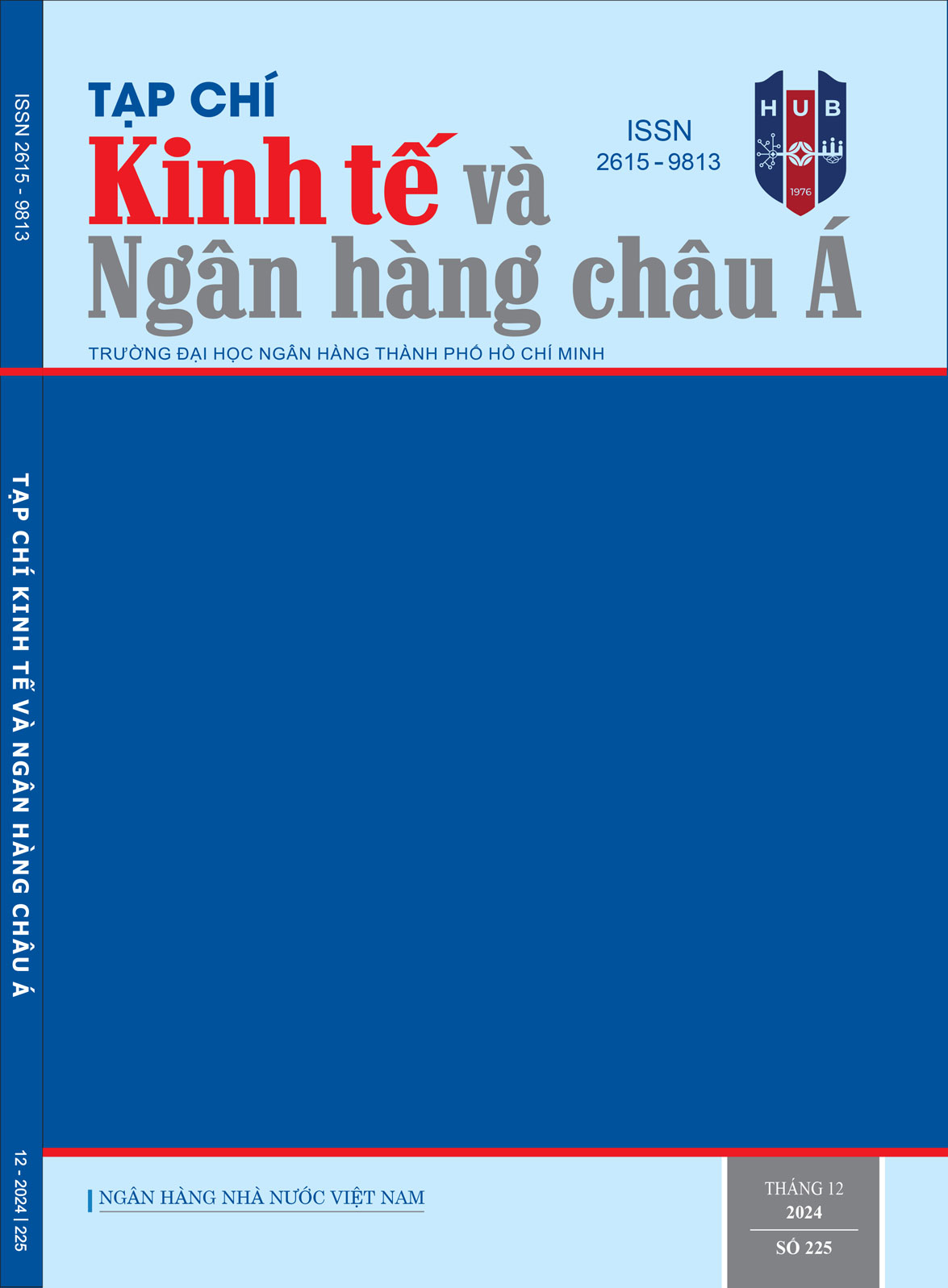| ISSN | 2615-9813 |
| ISSN (số cũ) | 1859-3682 |
SỐ 184 | THÁNG 7/2021
Về ước lượng subcopula cho các mô hình rời rạc
Santi Tasena
Tóm tắt:
Mục đích - Để thảo luận về ước lượng subcopula cho các mô hình rời rạc.
Thiết kế/phương pháp/cách tiếp cận – Sự hội tụ của các công cụ ước lượng được xem xét dưới sự hội tụ yếu của các hàm phân phối và các thuộc tính tương đương của nó đã biết trong các công trình trước đây.
Các phát hiện – Miền subcopula thực sự được liên kết với các biến ngẫu nhiên rời rạc được tìm thấy rời rạc ở phần bên trong của siêu khối đơn vị. Việc xây dựng một công cụ ước lượng trong đó các miền của chúng có dạng giống như miền của subcopula thực được cung cấp, trong trường hợp, các phân phối cận biên là nhị thức.
Tính mới/giá trị – Theo hiểu biết tốt nhất của chúng tôi, đây là lần đầu tiên một công cụ ước lượng như vậy được xác định và chứng minh là hội tụ về subcopula thực sự.
Tài liệu tham khảo:
- Boonmee, T. and Tasena, S. (2016), “Measure of complete dependence of random vectors”, Journal of Mathematical Analysis and Applications, Vol. 443 No. 1, pp. 585-595.
- de Amo, E., Carrillo, M.D., Durante, F. and Fernandez-Sanchez, J. (2017), “Extensions of subcopulas”, Journal of Mathematical Analysis and Applications, Vol. 452 No. 1, pp. 1-15.
- Dette, H., Siburg, K.F. and Stoimenov, P.A. (2013), “A copula-based non-parametric measure of regression dependence”, Scandinavian Journal of Statistics, Vol. 40 No. 1, pp. 21-41.
- Faugeras, O.P. (2017), “Inference for copula modeling of discrete data: a cautionary tale and some facts”, Dependence Modeling, Vol. 5 No. 1, pp. 121-132.
- Geenens, G. (2020), “Copula modeling for discrete random vectors”, Dependence Modeling, Vol. 8 No. 1, pp. 417-440. Nikoloulopoulos, A.K. (2013), “A survey on multivariate copula-based models for multivariate discrete response data”, Copulae in Mathematical and Quantitative Finance, Springer, pp. 231-249.
- Rachasingho, J. and Tasena, S. (2018), “Metric space of subcopulas”, Thai Journal of Mathematics, pp. 35-44.
- Rachasingho, J. and Tasena, S. (2020), “A metric space of subcopulas – an approach via hausdorff distance”, Fuzzy Sets and Systems, Vol. 378, pp. 144-156.
- Siburg, K. and Stoimenov, P. (2010), “A measure of mutual complete dependence”, Metrika, Vol. 71 No. 2, pp. 239-251.
- Tasena, S. (2020), “Complete dependence”, Direction Dependence in Statistical Modeling: Methods of Analysis, p. 167.
- Tasena, S. (2021a), “On a distribution form of subcopulas”, International Journal of Approximate Reasoning, Vol. 128, pp. 1-19.
- Tasena, S. (2021b), “On metric spaces of subcopulas”, Fuzzy Sets and Systems, Vol. 415, pp. 76-88.
- Tasena, S. and Dhompongsa, S. (2013), “A measure of multivariate mutual complete dependence”, International Journal of Approximate Reasoning, Vol. 54 No. 6, pp. 748-761.
- Tasena, S. and Dhompongsa, S. (2016), “Measures of the functional dependence of random vectors”, International Journal of Approximate Reasoning, Vol. 68, pp. 15-26.
- Trivedi, P. and Zimmer, D. (2017), “A note on identification of bivariate copulas for discrete count data”, Econometrics, Vol. 5 No. 1, p. 10.
On subcopula estimation for discrete models
Abstract:
Purpose
To discuss subcopula estimation for discrete models.
Design/methodology/approach
The convergence of estimators is considered under the weak convergence of distribution functions and its equivalent properties known in prior works.
Findings
The domain of the true subcopula associated with discrete random variables is found to be discrete on the interior of the unit hypercube. The construction of an estimator in which their domains have the same form as that of the true subcopula is provided, in case, the marginal distributions are binomial.
Originality/value
To the best of our knowledge, this is the first time such an estimator is defined and proved to be converged to the true subcopula.
DOI: https://doi.org/10.63065/ajeb.vn
Bài viết liên quan
-
Khi nào thì ngừng tính toán và bắt đầu đầu tư
Khi nào thì ngừng tính toán và bắt đầu đầu tư
-
Tỷ lệ tài chính và hiệu quả trong các công ty niêm yết Malaysia
Tỷ lệ tài chính và hiệu quả trong các công ty niêm yết Malaysia
-
Mở rộng UTAUT2 trong việc áp dụng M-banking và hành vi sử dụng thực tế: Giao tiếp WOM có quan trọng không?
Mở rộng UTAUT2 trong việc áp dụng M-banking và hành vi sử dụng thực tế: Giao tiếp WOM có quan trọng không?
-
Tại sao khuôn khổ quản trị Shariah lại quan trọng đối với các ngân hàng Hồi giáo?
Tại sao khuôn khổ quản trị Shariah lại quan trọng đối với các ngân hàng Hồi giáo?
-
Nợ công và tăng trưởng kinh tế: bằng chứng đương đại từ một nền kinh tế đang phát triển
Nợ công và tăng trưởng kinh tế: bằng chứng đương đại từ một nền kinh tế đang phát triển
-
Mô hình TOPSIS dựa trên thước đo entropy và thước đo về sự tương tự để lựa chọn và đánh giá phân khúc thị trường
Mô hình TOPSIS dựa trên thước đo entropy và thước đo về sự tương tự để lựa chọn và đánh giá phân khúc thị trường
-
Một nghiên cứu thực nghiệm về sinh viên thương mại (đại học và sau đại học) cho ngành bảo hiểm ở Ấn Độ
Một nghiên cứu thực nghiệm về sinh viên thương mại (đại học và sau đại học) cho ngành bảo hiểm ở Ấn Độ








